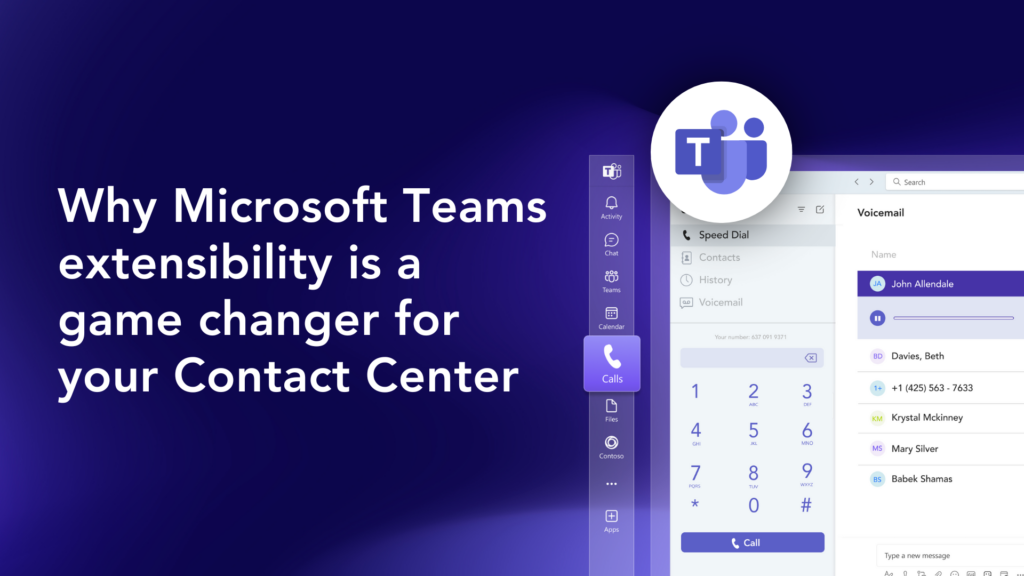Around 92% of businesses are expected to adopt a software-defined wide area network (SD-WAN) solution by 2026.1 If you haven’t moved your business to an SD-WAN solution yet, it’s likely only a matter of time.
However, many business leaders aren’t sure if managed SD-WAN or a DIY solution would be best for their company.
While an estimated 77% of businesses with SD-WAN use a fully managed or co-managed solution,1 the right option will ultimately depend on your organization’s needs. In this blog, we’re diving into managed SD-WAN and its benefits to help you make the best choice for your business.
What Is Managed SD-WAN?
Managed SD-WAN refers to a service where a third-party managed service provider (MSP) maintains a company’s SD-WAN infrastructure.
The MSP typically provides networking hardware and software, including SD-WAN controllers and routers, to establish and manage the network. They then configure and optimize the network, monitor for and resolve issues, and provide regular reports on network performance.
Managed SD-WAN services are especially useful for businesses without the internal IT resources to effectively manage an SD-WAN network. Businesses can simply pass the reins to their MSP to handle day-to-day network management, freeing internal resources to focus on other critical activities.

SD-WAN as a Service vs. Managed SD-WAN
SD-WAN as a Service (SDWaaS) and managed SD-WAN are two different approaches businesses can take for deploying and managing SD-WAN solutions.
SDWaaS is a cloud-based service model that provides a complete SD-WAN solution, including hardware, software, and management, delivered as a service. In this model, businesses subscribe to a cloud-based SD-WAN service via a third-party managed service provider (MSP). The MSP then manages the SD-WAN infrastructure, and the business pays a monthly subscription fee.
This differs from managed SD-WAN because it doesn’t allow businesses to retain control over their network infrastructure or customize their SD-WAN to their specific needs.
Pros of SD-WAN Managed Services
Managed SD-WAN services can offer several benefits and drawbacks for businesses. Some of the pros of managed SD-WAN service include:
Expertise
An SD-WAN managed service is provided by network experts who can configure, manage, and monitor your network, freeing up internal IT staff to focus on other tasks that grow your business.
Cost Savings
A managed SD-WAN solution typically offers predictable monthly pricing with no upfront costs on networking infrastructure or hardware.
Scalability
Managed SD-WAN can quickly and easily scale up or down to meet your business’s changing needs without requiring a significant investment or changes to the network infrastructure.
Security
With managed SD-WAN services, your MSP can provide enhanced security measures like intrusion detection and prevention systems, firewalls, and VPNs, which can help protect your network services.
Performance
Managed SD-WAN services can optimize network performance, reduce latency, improve application response times, and increase network uptime – resulting in a better user experience.
Potential Cons of SD-WAN Managed Services
Possible drawbacks of managed SD-WAN include:
Loss of Control
While you retain more control over your network with managed SD-WAN than SDWaaS, you’ll still have to relinquish some control over the network to your MSP.
Vendor Lock-In
Managed SD-WAN solutions may tie your business to a particular vendor or provider, making it difficult to switch providers in the future.
Limited Customization
Managed SD-WAN services may offer limited customization options, as your MSP typically manages the network configuration and policies.
Reliance on the Provider
With managed SD-WAN, your business must rely on your MSP for network management, which can be a concern if they frequently experience downtime or other issues.
How Does Managed SD-WAN Solve Modern IT Challenges?
Traditional WANs can be complex and difficult to manage, especially for multi-location businesses. SD-WAN simplifies network management by consolidating multiple connections into a single platform. Additionally, IT teams can manage the network across every location, including their branch offices and data center, from a central location.
Businesses are also increasingly dependent on cloud services and remote working models, making reliable and secure connectivity essential. SD-WAN offers a way for work-from-anywhere employees to securely connect to corporate resources without impacting user performance.
What Are Popular SD-WAN Tools and Services?
Because SD-WAN technology is flexible and responsive, many tools and services are available to meet your company’s needs. Some popular options include:
WAN Management Protocols
Several WAN management protocols enable an MSP to remotely monitor and manage the network in real-time. Common services include performance management, automatic configuration, and software management.
Policy Rules
SD-WAN policy rules are used to manage network traffic and optimize performance by controlling how traffic is routed over the network. Managed SD-WAN providers can configure policy rules to ensure the critical applications your employees need to stay productive always receive the necessary bandwidth and network resources.

Public Cloud Support
Your MSP or SD-WAN vendor can connect your network to public cloud services, such as Amazon Web Services (AWS), Microsoft Azure, or Google Cloud Platform (GCP), through your SD-WAN network for high-performance, global connectivity.
Centralized Management
SD-WAN solutions provide a centralized management console for network administrators or your MSP to manage network policies, configurations, and performance across all locations.
WAN Optimization
Managed SD-WAN services can optimize network performance through WAN optimization and bandwidth aggregation, improving application performance and reducing latency.
Managed Connectivity
Since managed SD-WAN solutions are delivered over the cloud, your vendor can provide a fully managed, end-to-end connectivity solution that includes broadband internet, 4G/LTE, and private connections as needed.
Managed CPE
Managed customer premises equipment (CPE) is a service where your MSP takes responsibility for installing, configuring, and maintaining your network equipment, including routers, switches, firewalls, and other network devices.
Analytics and Reporting
Managed SD-WAN services may offer a range of analytics and reporting features to provide valuable insights into network traffic patterns, application performance, and user behavior. These services enable your SD-WAN vendor to help optimize your network performance.
What Is SASE?
SASE (Secure Access Service Edge) is a cloud-based networking and security model. That provides secure network access from anywhere and any device. SASE combines network and security services, including SD-WAN, secure web gateway (SWG), cloud access security broker (CASB), and zero-trust network access (ZTNA) into a single platform.
SASE combines the benefits of SD-WAN, which provides reliable connectivity, with the security features of SWG, CASB, and ZTNA.
Conclusion
Today’s networking environments are increasingly complex. With managed SD-WAN, you can leverage the expertise of MSPs to:
- Optimize your network
- Reduce costs
- Adapt to changing needs
- Improve productivity
- Provide a better user experience
If you’re ready to take your organization to the next level with an agile SD-WAN solution, Momentum can help. We designed our Navigator SD-WAN solution to free up your team’s resources by streamlining operations, simplifying monitoring and reporting, and automating troubleshooting. Contact us today to learn more.
Source:



